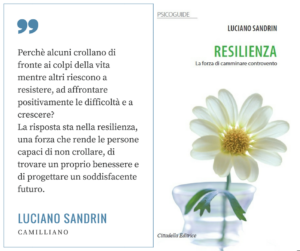 Resilience is the strength to resist situations of deep suffering, the ability to face them and turn them into experiences that help to grow. I have already spoken about it in this magazine a few years ago. I briefly recall this theme because a book of mine has just come out: Resilience: the strength to walk upwind.
Resilience is the strength to resist situations of deep suffering, the ability to face them and turn them into experiences that help to grow. I have already spoken about it in this magazine a few years ago. I briefly recall this theme because a book of mine has just come out: Resilience: the strength to walk upwind.
How to become resilient? This is the question that parents, teachers, educators and professionals working in the social and health field ask after they have heard about it and understand its importance. The promotion of resilience cannot be limited to offering techniques and tools. It develops in relation to specific contexts and particular situations, through relationships, and within people’s life journey. There are actions that facilitate the development of skills that can help the process of resilience, before the problem is felt and there are strategies that can favor it in the moment in which a particular traumatic situation is experienced.
To be resilient we need relationships, but above all, “warm” affective relationships that help us live and grow well. Harry Harlow proved this quite clearly a few years ago. He separated little monkeys from their mothers and raised them in a cage in which a “mother made only of wire” was placed, which could dispense milk through a bottle placed on the breast, and a “mother made of soft tissue”, which offered a comfortable contact. The monkeys preferred to stay in touch with the mother made of fabric and moved from time to time to the other mother, just to suck the milk. In stressful situations, the little monkeys took refuge in the mother of soft tissue, to draw warmth and comfort.
We are not monkeys. But experience tells us that our children also seek warmth and tenderness. And this also applies to us who are grown-ups.








